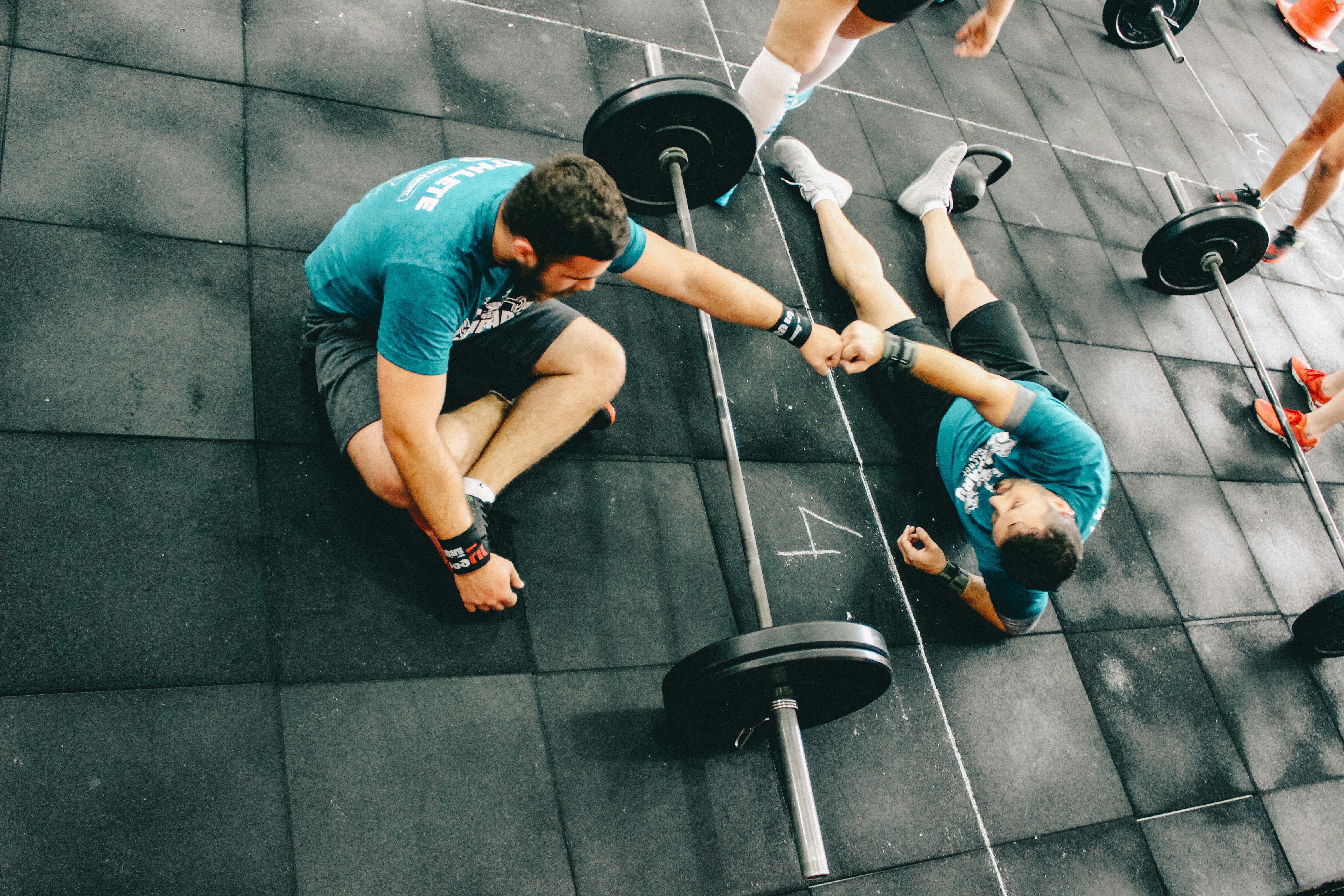The Overcoming Obstacles Blog

Why Conditioning (Not Strength) Is Key To Longevity and Success
"It does not matter how slowly you go as long as you do not stop." – Confucius
Hybrid racing, whether it’s HYROX, DEKA, or any other combination of endurance and strength challenges, demands a unique blend of physical attributes. While many athletes focus on either raw strength or pure endurance, the real key to excelling in hybrid events is conditioning. This is what allows you to move efficiently between exercises, sustain high-intensity efforts, and maintain speed even when fatigued.
What is Conditioning and Why is it Crucial?
Conditioning is your ability to sustain performance across multiple modalities without excessive fatigue. Unlike strength (which is about maximal force output) or endurance (which focuses on sustaining submaximal efforts for long periods), conditioning is about how well you handle repeated efforts with minimal drop-off in performance. In hybrid events, it’s what separates a smooth, consistent competitor from someone who burns out early.
How Conditioning Impacts Hybrid Events:
Smooth Transitions – The ability to move from running to functional exercises efficiently without needing extra recovery time.
Fatigue Resistance – Avoiding the heavy legs, burning lungs, and complete exhaustion that come with poor conditioning.
Speed Retention – Maintaining a steady pace from start to finish, instead of slowing down drastically in later rounds.
Recovery Between Stations – The better your conditioning, the faster your heart rate recovers after intense efforts, allowing you to push harder in the next zone.
Mental Toughness – The ability to keep pushing even when fatigued, knowing your body is prepared to handle the workload.
Efficiency in Movement – Better conditioning means performing each exercise with proper form, reducing energy waste and injury risk.
Why Conditioning is Important for Longevity and Health
Conditioning isn’t just beneficial for performance in hybrid events—it plays a critical role in overall health and longevity. Having a well-conditioned body improves your cardiovascular fitness, metabolic function, and resilience against chronic diseases.
Key Benefits of Conditioning for Longevity:
Heart Health – Regular conditioning work improves cardiovascular efficiency, lowering the risk of heart disease, high blood pressure, and stroke.
Metabolic Health – Higher levels of conditioning are linked to better insulin sensitivity, reduced risk of type 2 diabetes, and improved lipid profiles.
VO2 Max as a Biomarker – VO2 max, which measures your body’s ability to use oxygen efficiently, is one of the strongest predictors of longevity. Studies show that individuals with higher VO2 max levels live longer and have lower risks of mortality.
Resilience Against Aging – Conditioning enhances mitochondrial function, muscle endurance, and overall energy levels, reducing age-related decline in physical capability.
Injury Prevention – A well-conditioned body can handle physical stress more effectively, reducing the likelihood of injuries, particularly as you age.
Prioritizing conditioning isn’t just about performance—it’s a long-term investment in your health and quality of life.
Example Conditioning Workouts for Hybrid Athletes
To improve conditioning, you need interval-based workouts that train your body to repeatedly perform at a high level with short recovery times. Here are a few highly effective conditioning workouts you can implement right away:
1. HYROX-Style Conditioning Circuit
Purpose: Improve race-specific conditioning with compromised running.
800m run
30 wall balls
50m sled push
200m farmer’s carry
Rest 2-3 minutes, repeat 3-5 rounds
2. Assault Bike & Sled Power Intervals
Purpose: Improve power endurance and fatigue resistance.
30 seconds max effort Assault Bike
30 seconds sled push (moderate-heavy weight)
30 seconds rest
Repeat 6-10 rounds
3. EMOM (Every Minute on the Minute) Compromised Running
Purpose: Train your body to run efficiently even when fatigued.
Minute 1: 200m run
Minute 2: 8 burpees
Minute 3: 10 sandbag lunges
Minute 4: 10 cal SkiErg
Repeat for 5-6 total cycles
4. Progressive Density Workouts
Purpose: Improve muscular endurance and efficiency under fatigue.
Set a 20-minute timer and perform as many rounds as possible of:
400m run
15 wall balls
12 kettlebell swings
8 burpee broad jumps
5. Pacing-Based Interval Work
Purpose: Improve ability to sustain effort over time.
5 rounds: 400m run + 20 kettlebell swings + 15 wall balls
Aim for consistent pacing across all rounds
How to Seamlessly Add Conditioning into Your Current Routine
You don’t need to overhaul your entire training program to improve conditioning. Here’s how you can add it into your existing schedule without disrupting your strength or endurance work:
1. Finish Strength Days with a Short Conditioning Block
Instead of just lifting weights and calling it a day, add a 5-10 minute finisher like:
30-second SkiErg sprint
30-second burpees
30-second farmer’s carry
30-second rest, repeat for 4-6 rounds
This maintains strength while improving fatigue resistance
2. Replace Long Steady-State Cardio with Interval Training
If you normally do a 60-minute Zone 2 run, replace one session per week with:
6 x 800m runs at threshold pace with 90 seconds rest
3 x 2,000m row at race pace with 2-minute rest
10 x 60 seconds hard effort, 60 seconds easy on the Assault Bike
This keeps your aerobic capacity high while training your body to recover quickly
3. Dedicate One Day to Hybrid-Style Workouts
Instead of a traditional endurance or lifting session, schedule one workout per week that simulates race conditions:
Example: 5 rounds of 600m run + sled push + burpees + wall balls
This keeps you race-ready without sacrificing strength or endurance gains.
Helps develop mental toughness needed for race day
4. Use Short, High-Intensity Workouts as Active Recovery
On your lighter days, instead of full rest, do low-impact, conditioning-based sessions like:
20-30 minutes of alternating SkiErg, rower, and cycling at moderate intensity
Zone 2 effort with short bursts of high-intensity work mixed in
Bodyweight circuits that focus on movement efficiency and recovery
5. Focus on Recovery and Adaptation
Conditioning is demanding, so recovery is key to making consistent progress:
Prioritize sleep, hydration, and proper nutrition
Implement foam rolling, stretching, and mobility work to aid recovery
Balance high-intensity sessions with low-intensity work to avoid burnout
Final Thoughts
Strength and endurance are important, but conditioning is what allows you to actually perform well in a hybrid race. If you’re strong but gas out halfway through, or if you have endurance but struggle with transitions, your performance will suffer. By incorporating race-specific conditioning workouts and seamlessly integrating them into your existing routine, you’ll develop the ability to maintain high effort, recover quickly, and push through fatigue on race day.
Unsure of how to add conditioning into your program? Click the link to set up your free call today! https://roadtodawnwellness.com/book-page-7052

QUICK LINKS
GET IN TOUCH
Home Base: Little Chute, WI
(516) 924-6062
Monday - Saturday : 8:00 - 5:00
© 2024 Road to Dawn Strength and Wellness